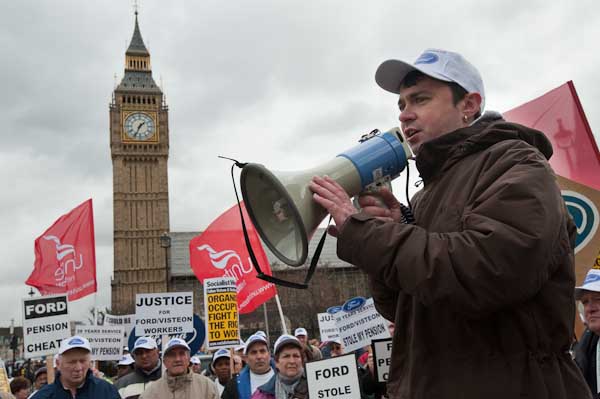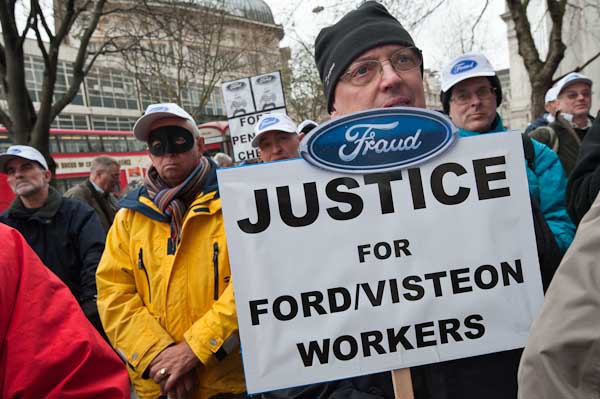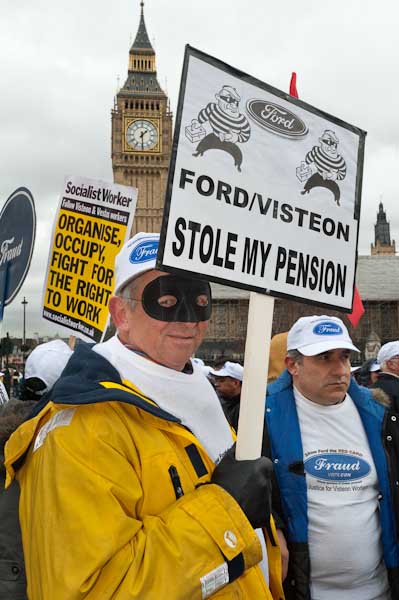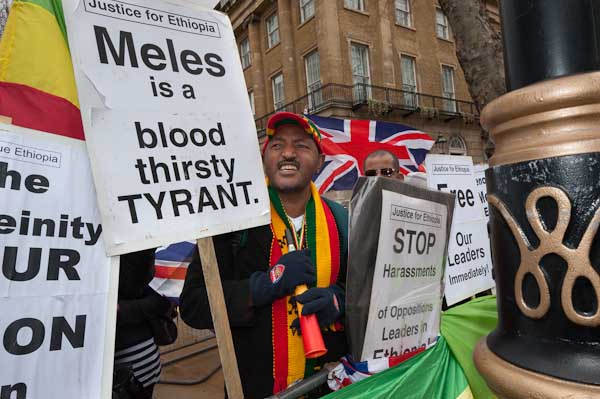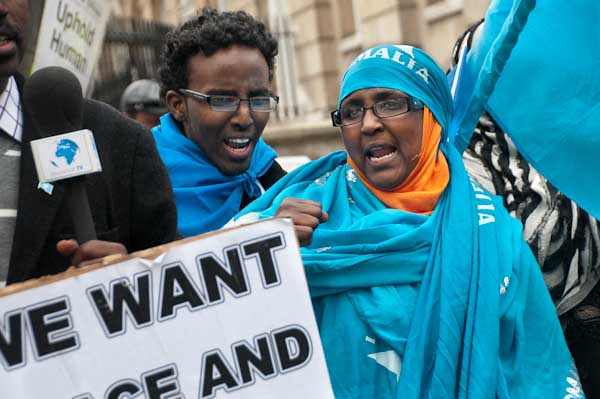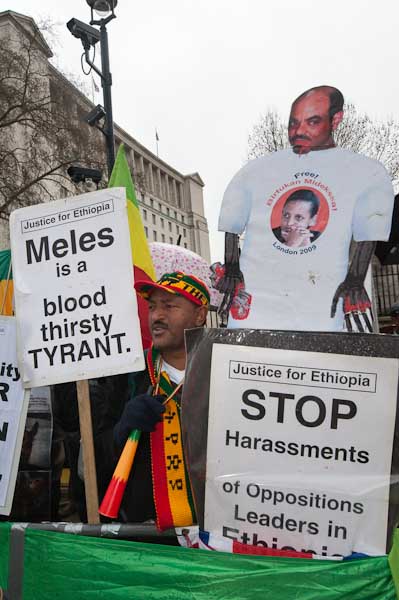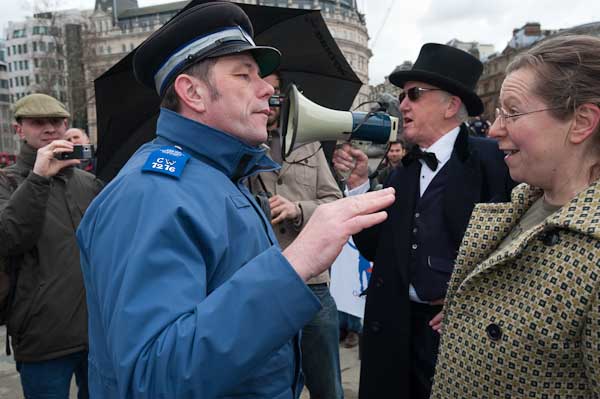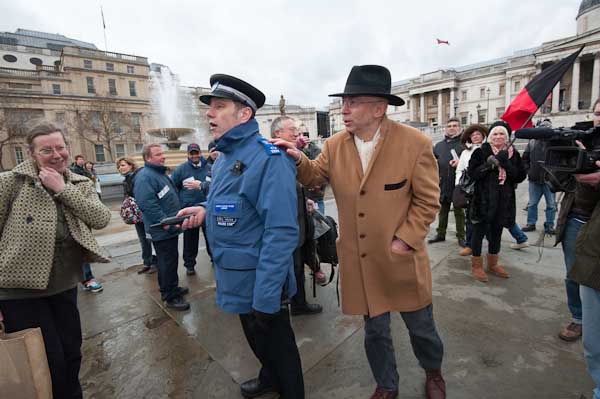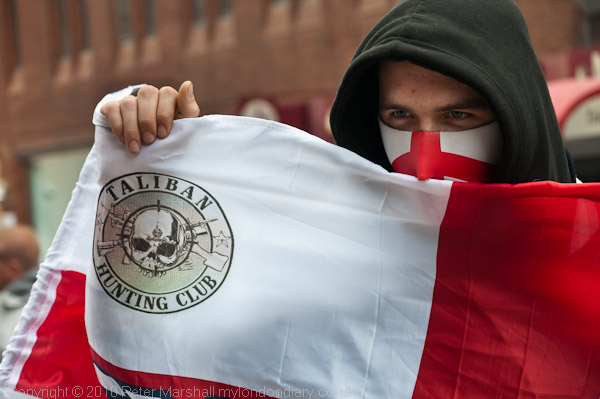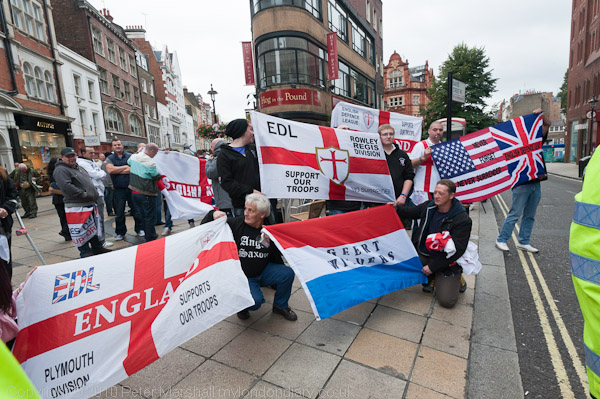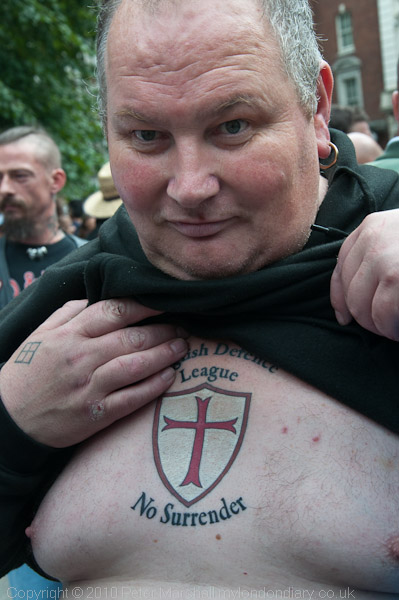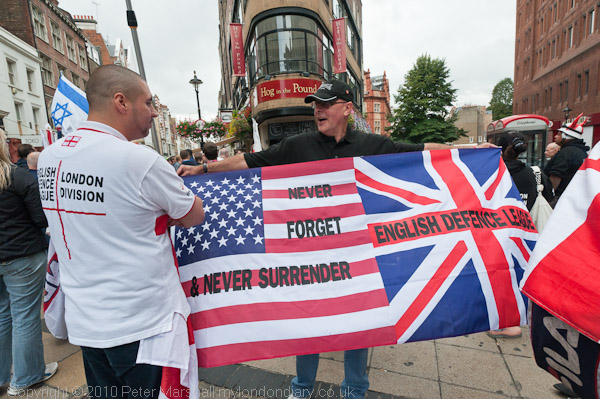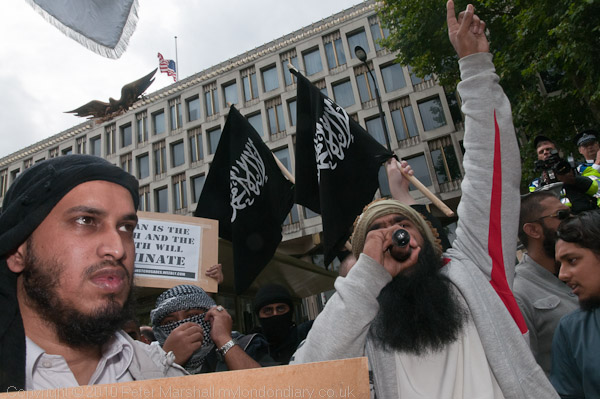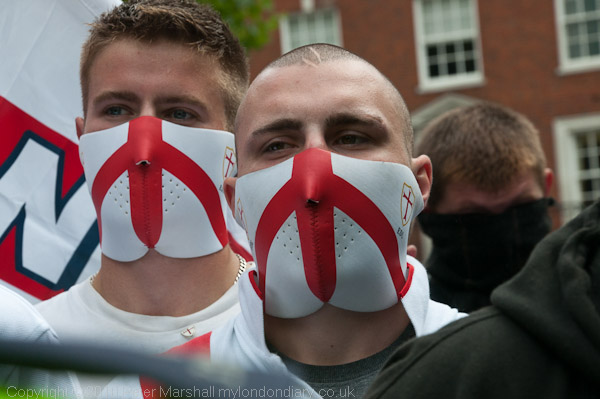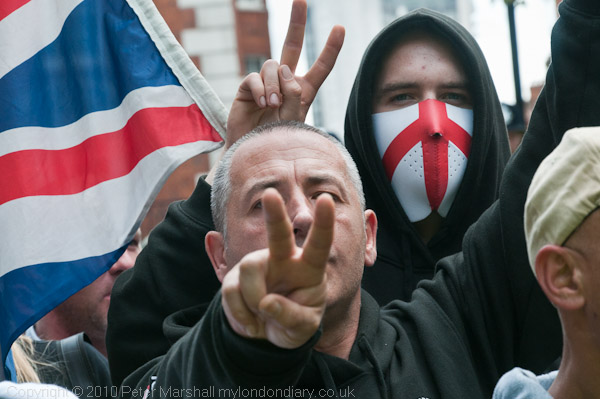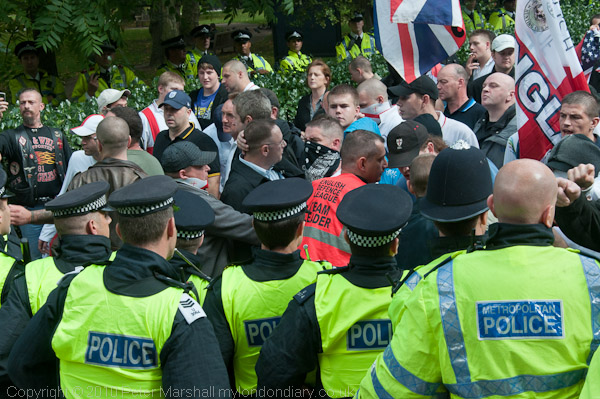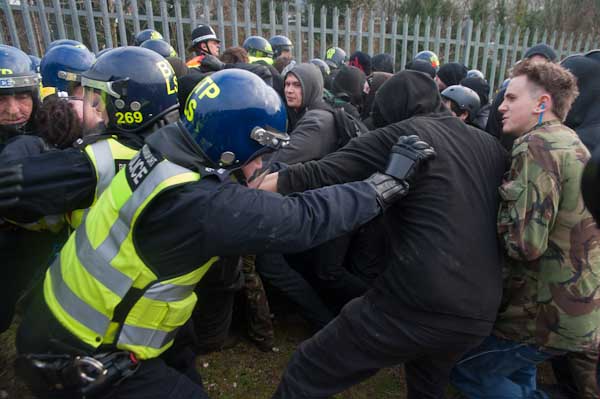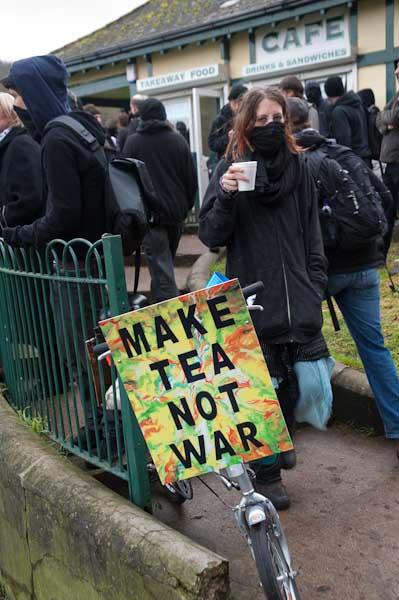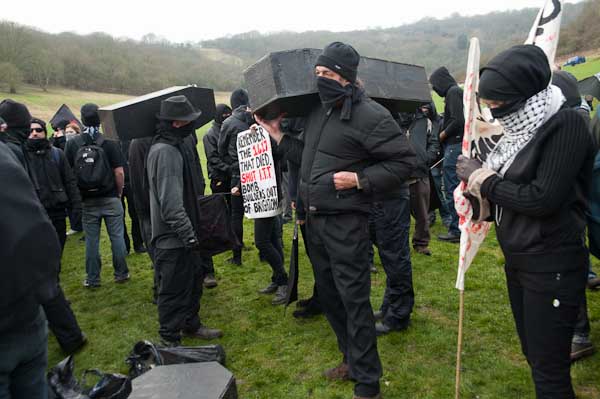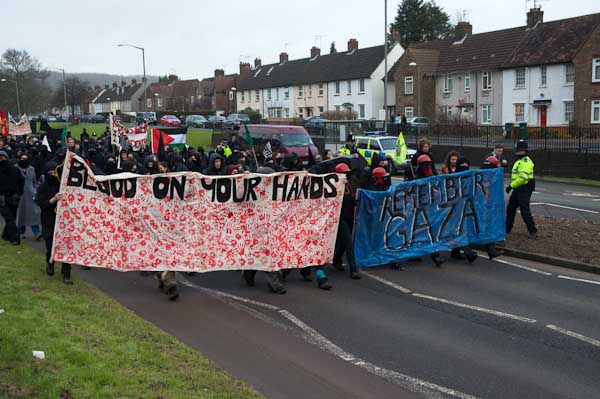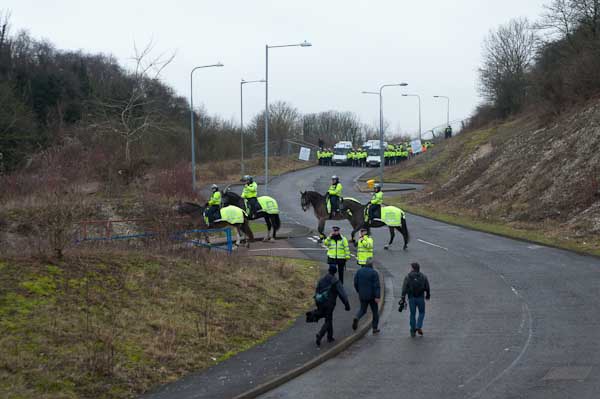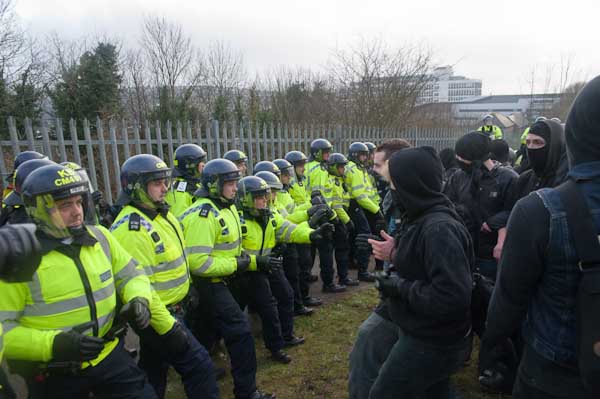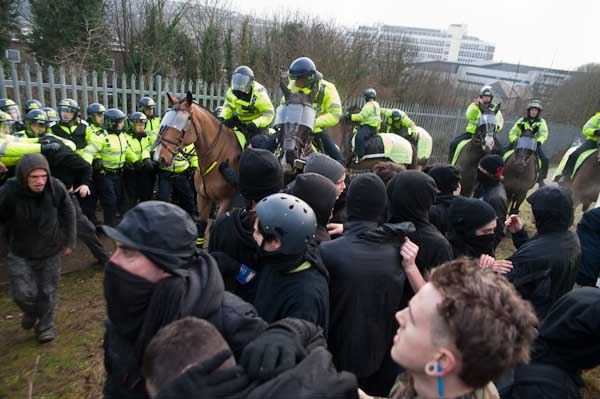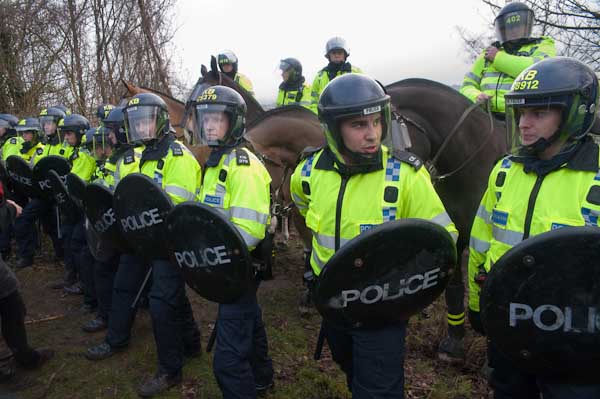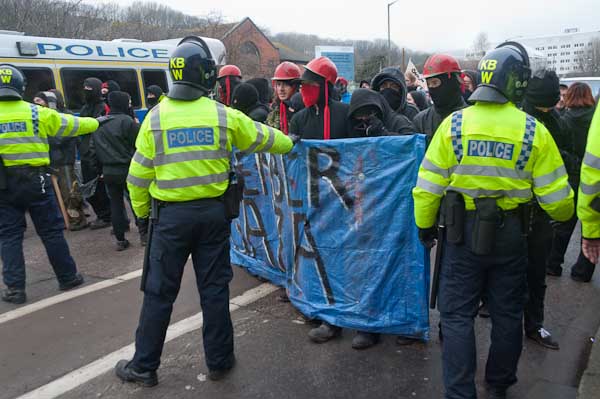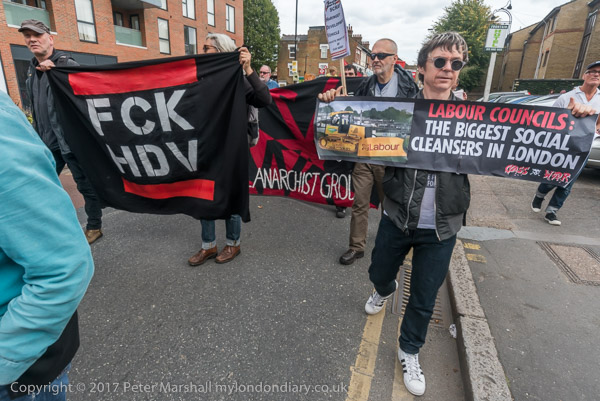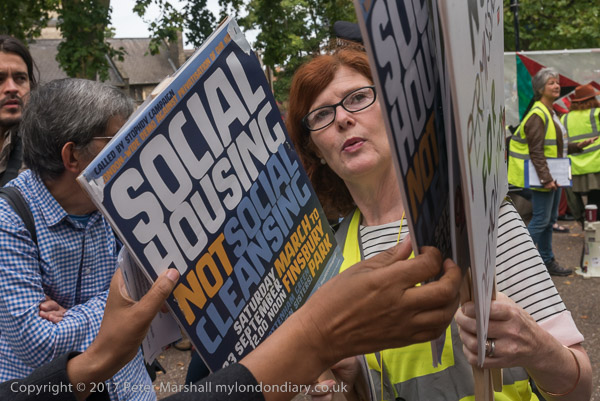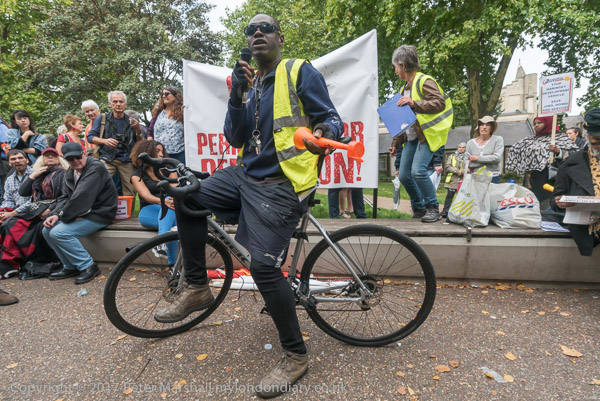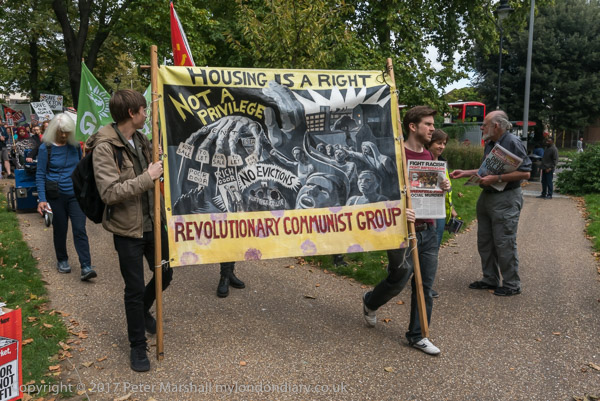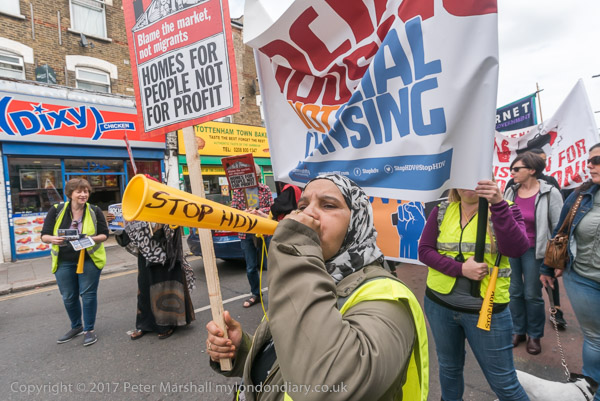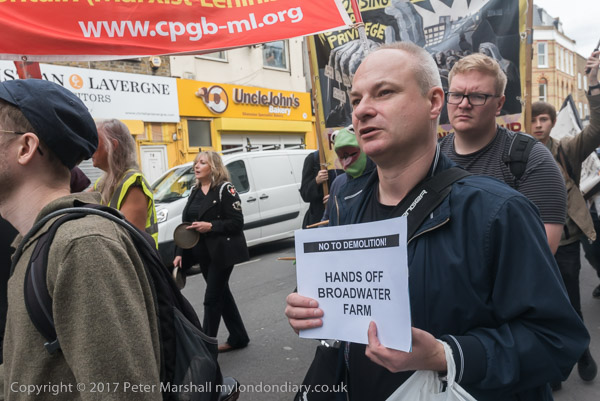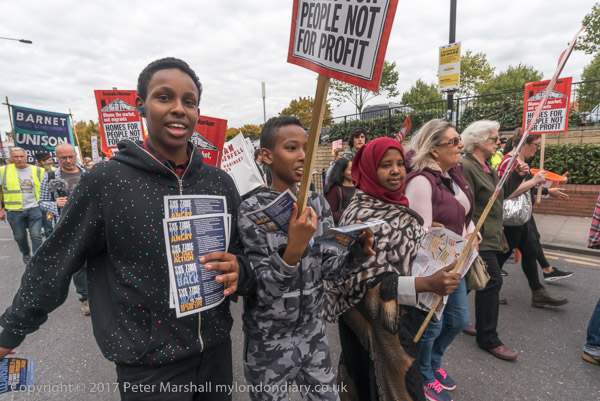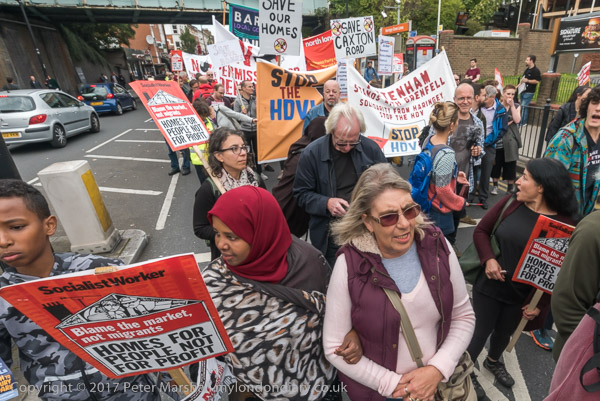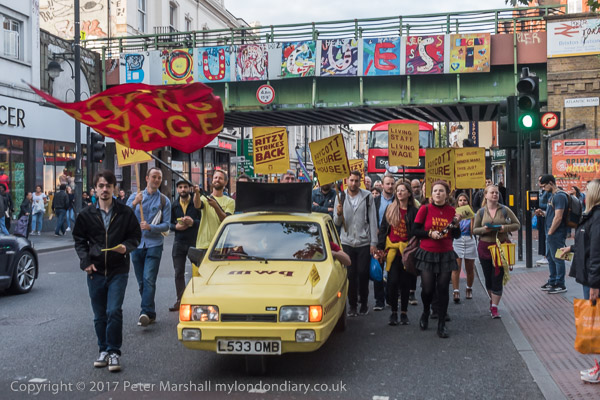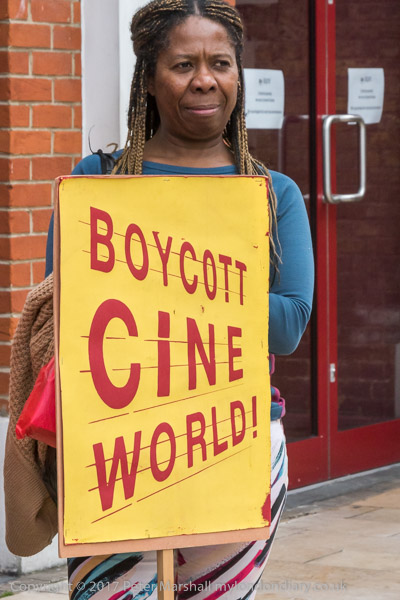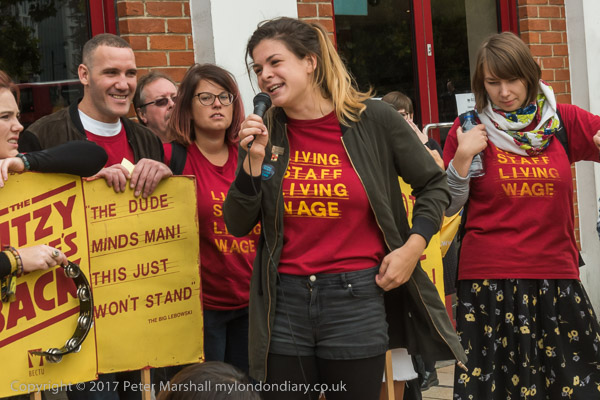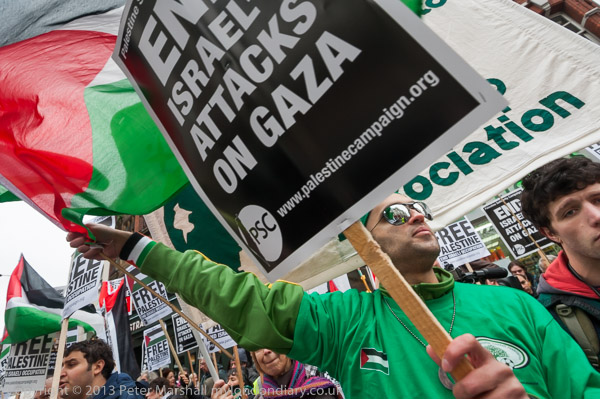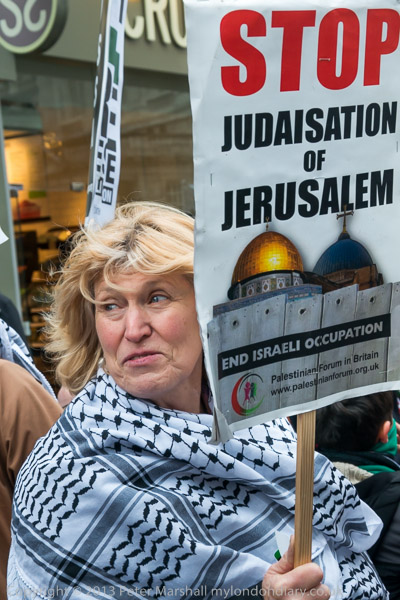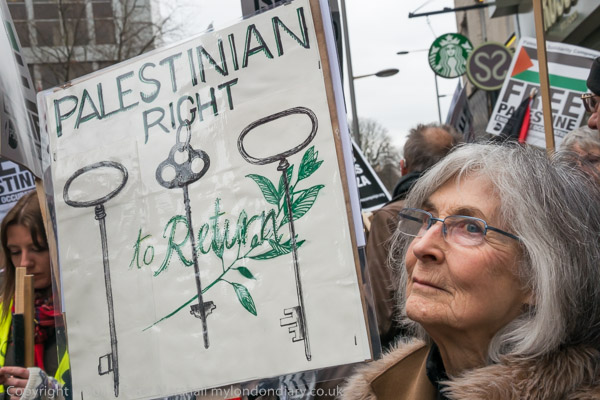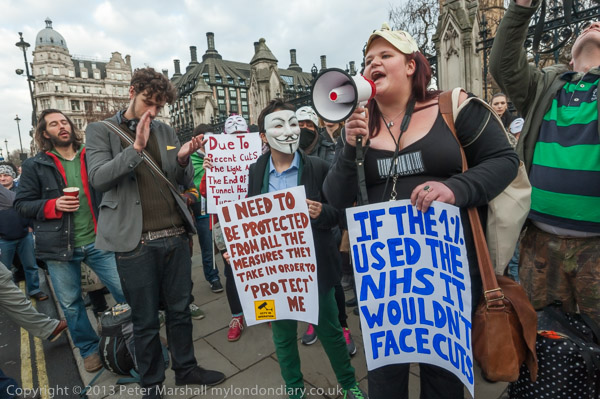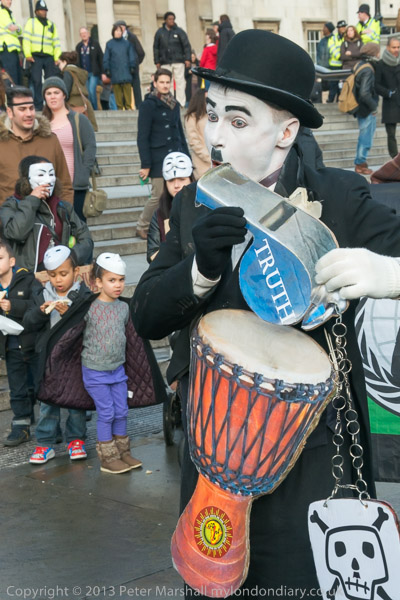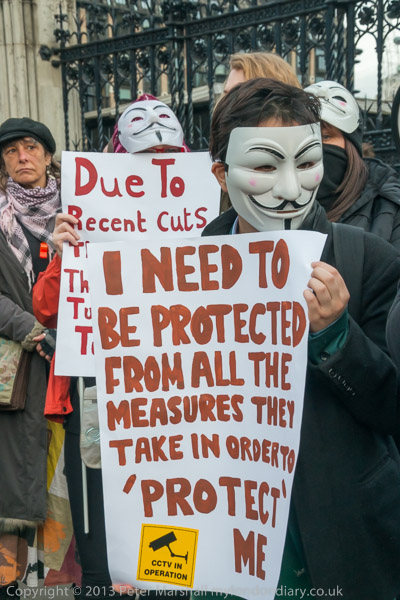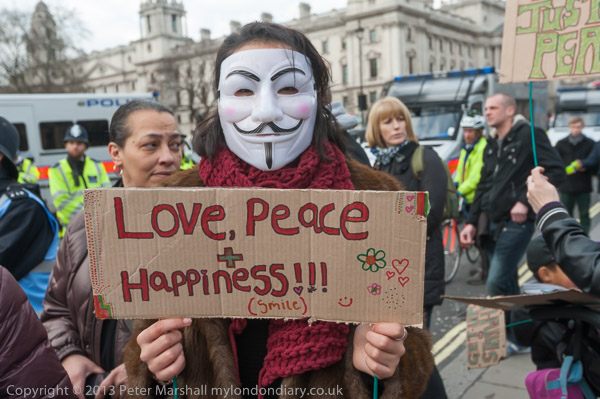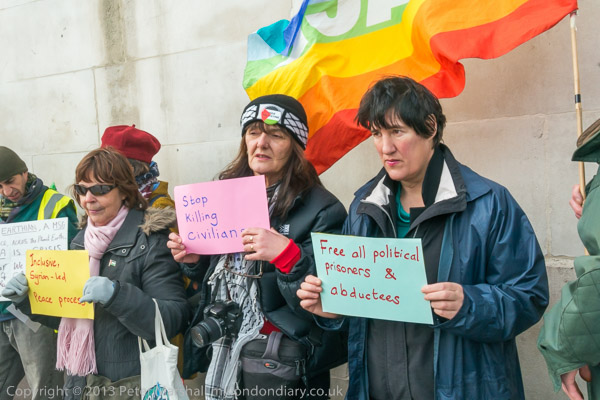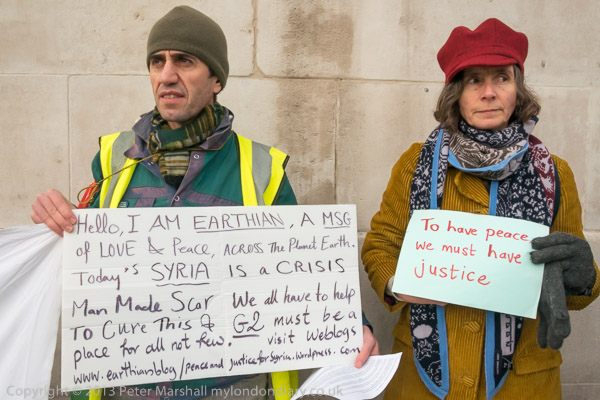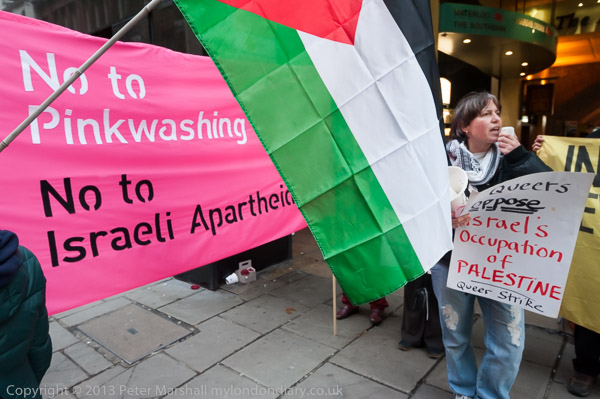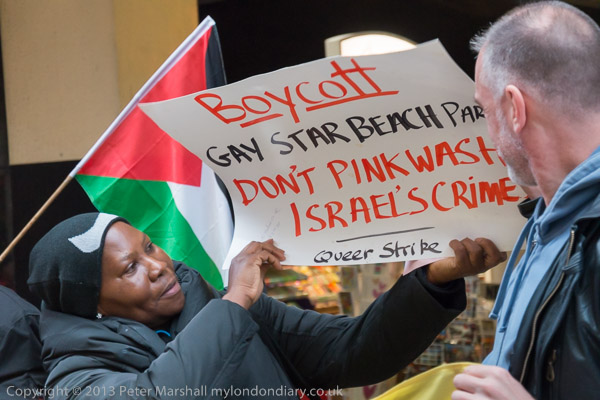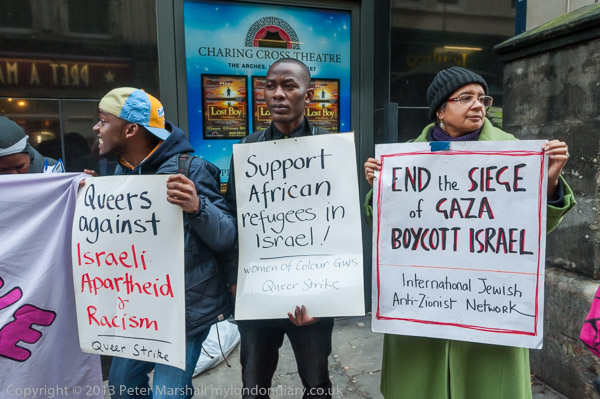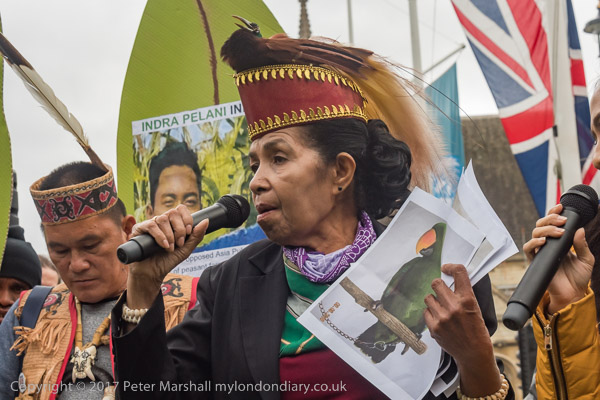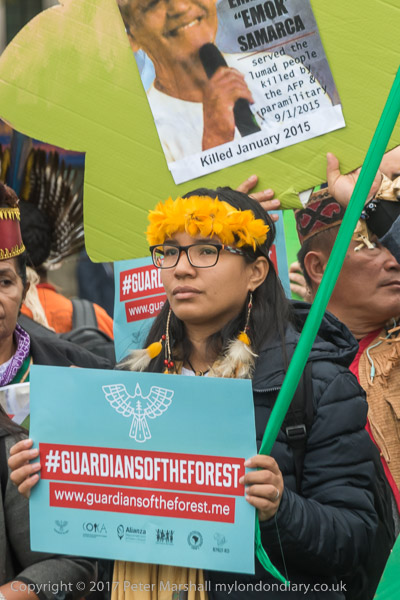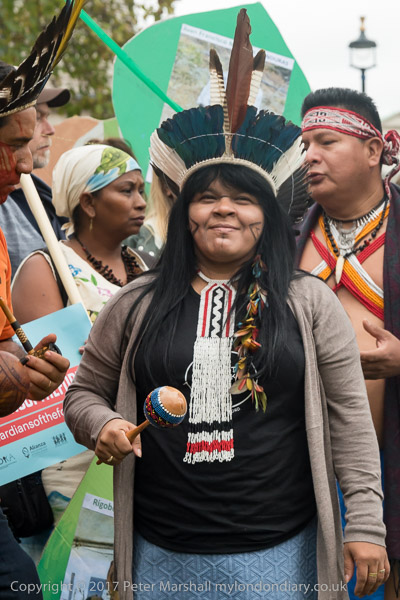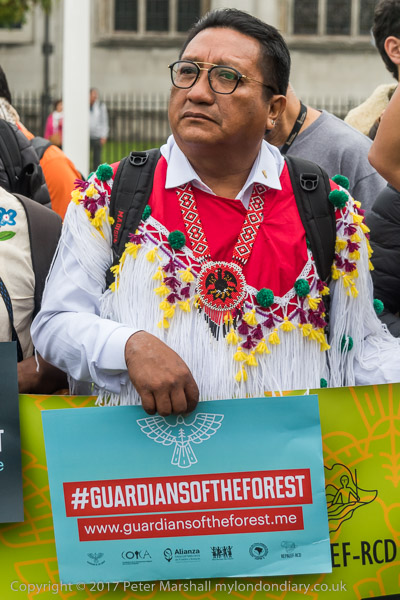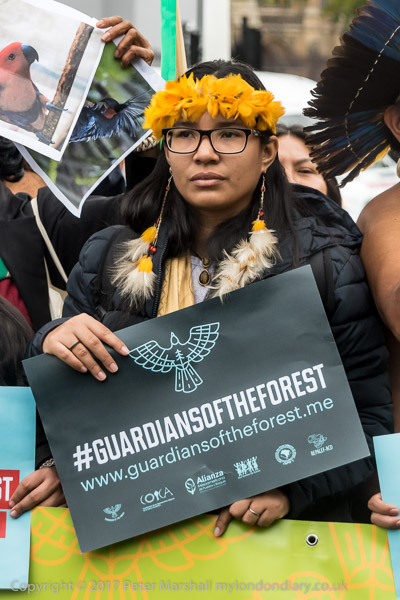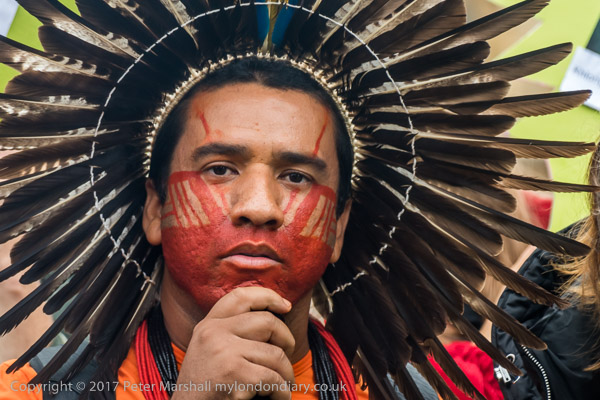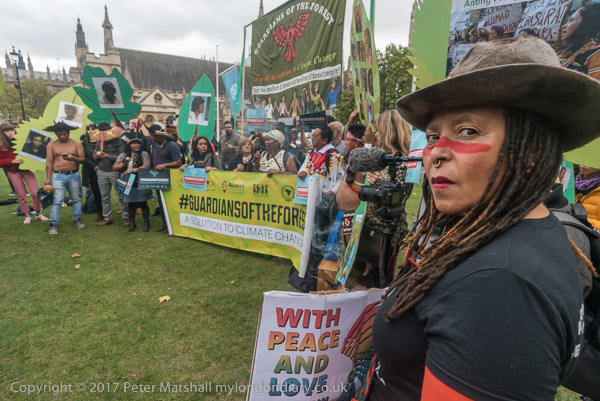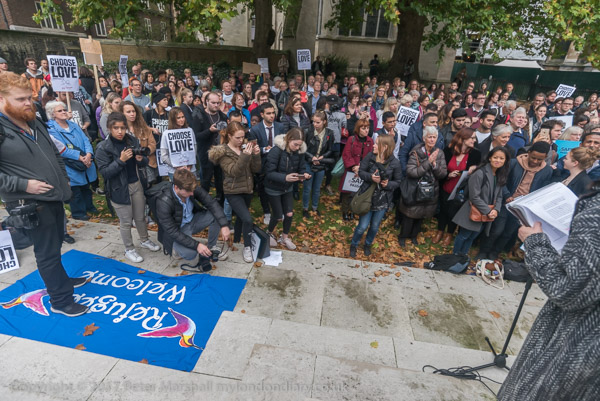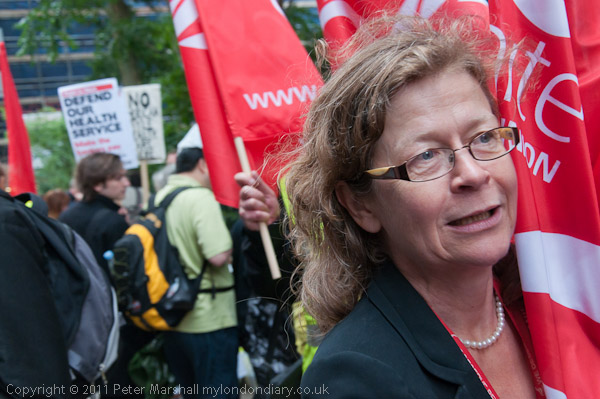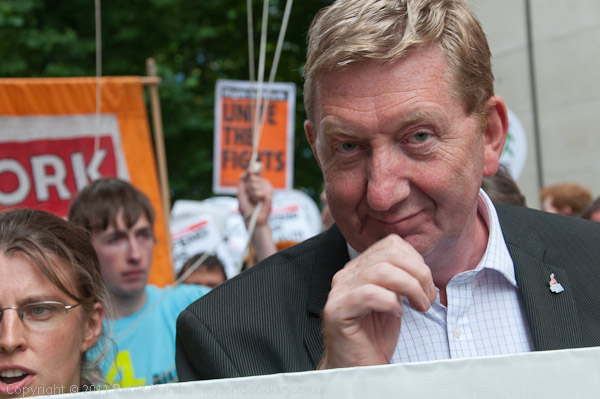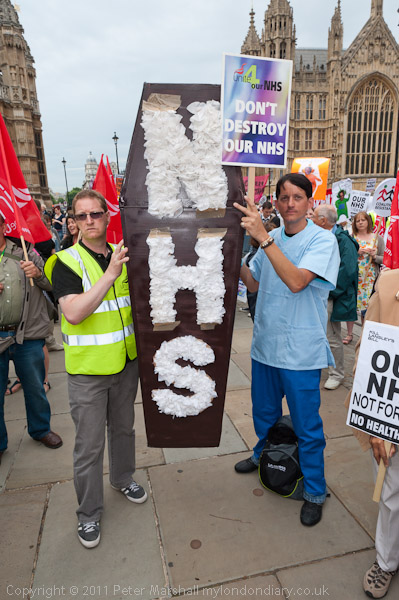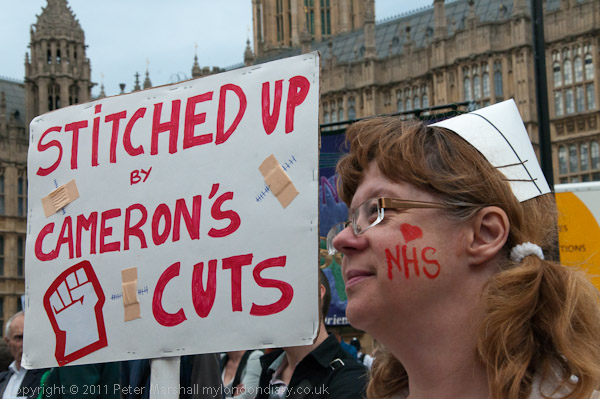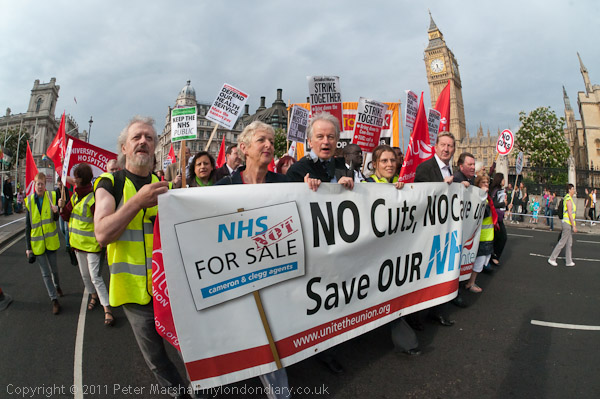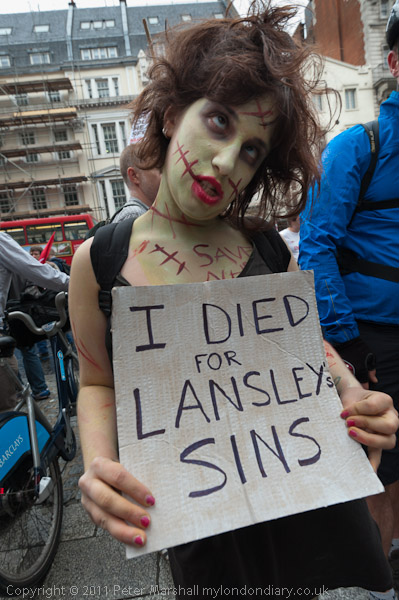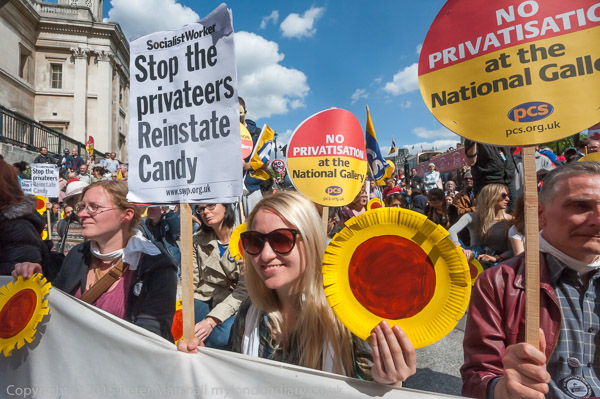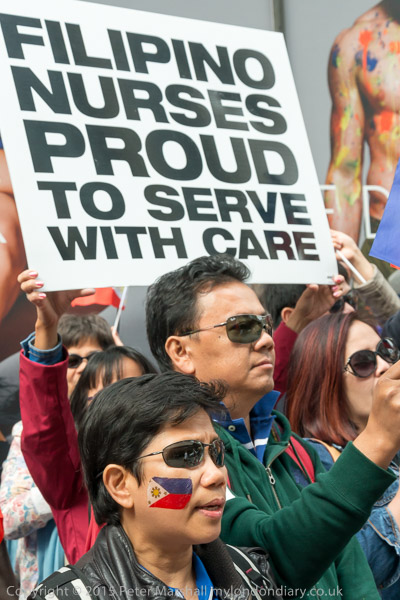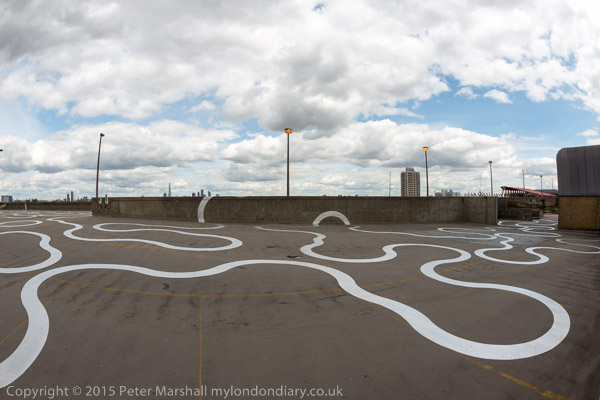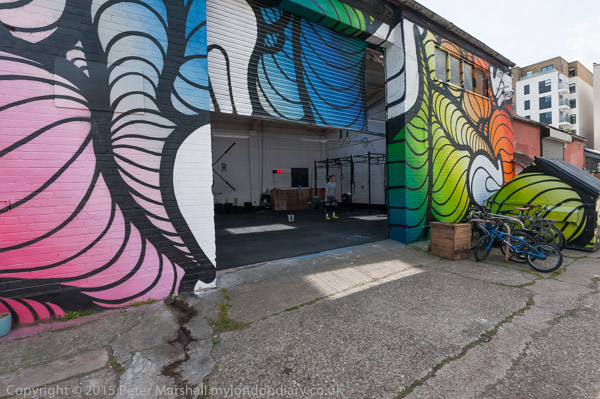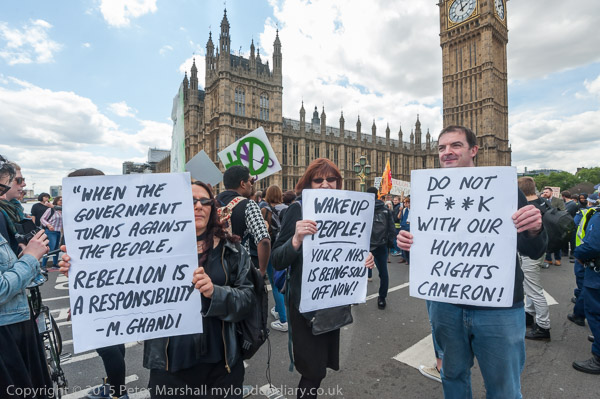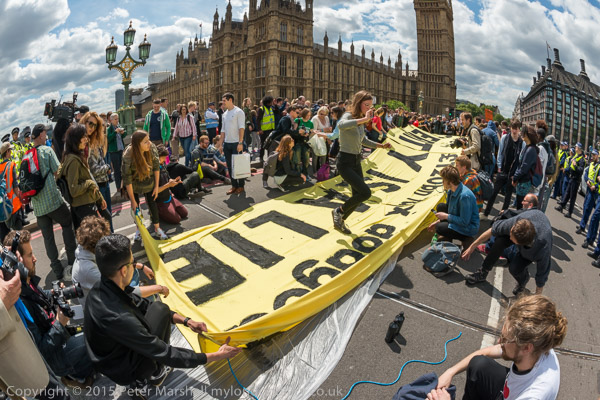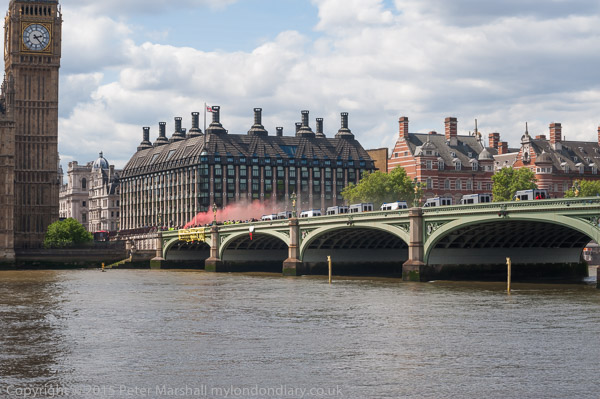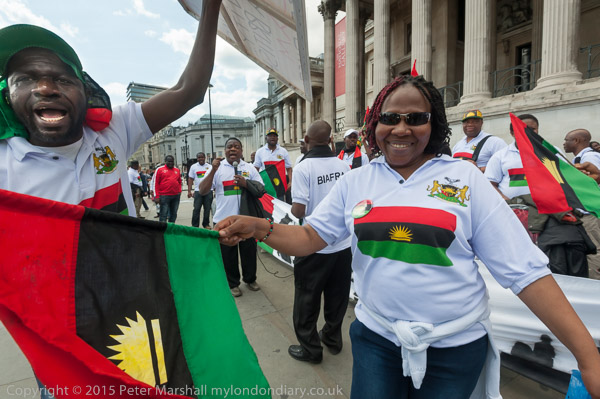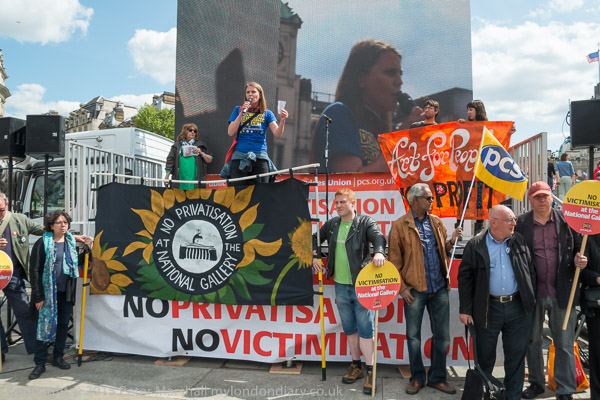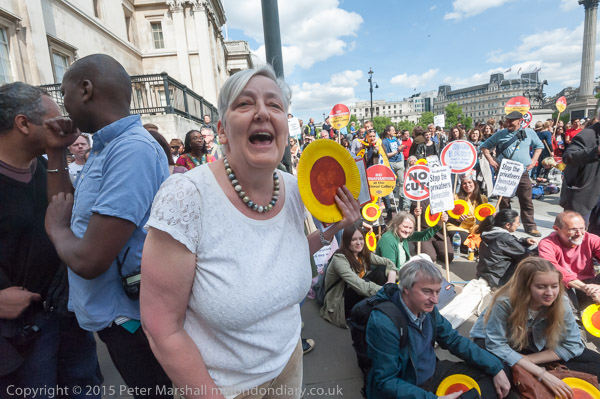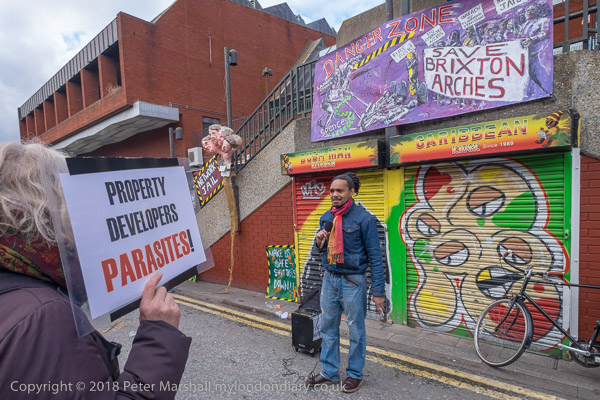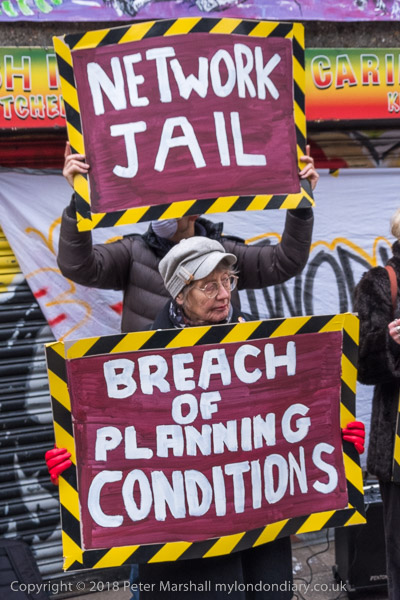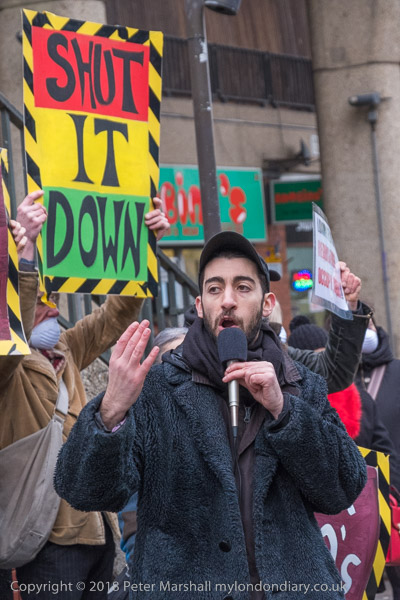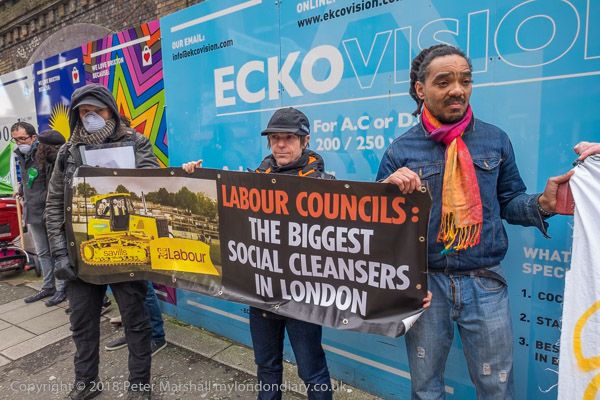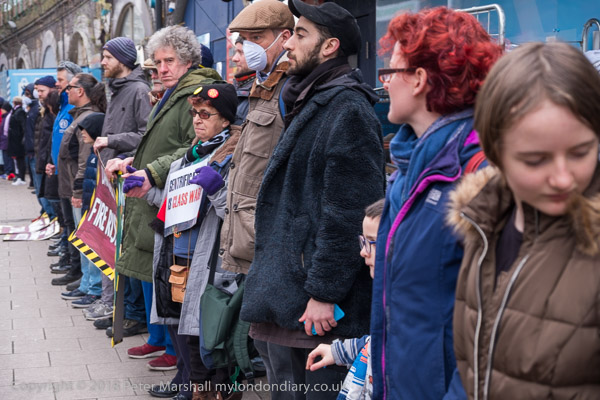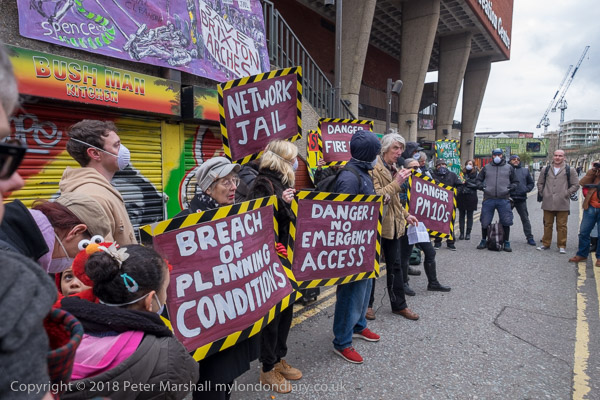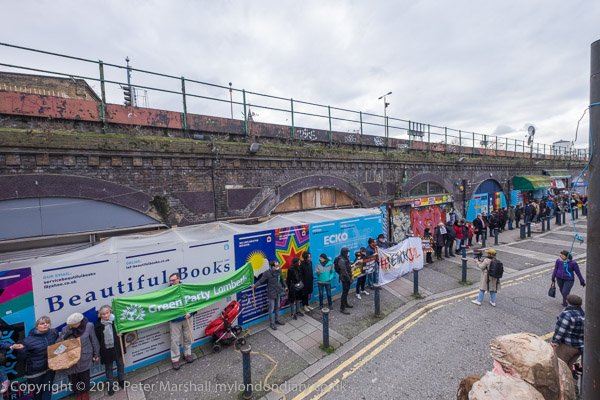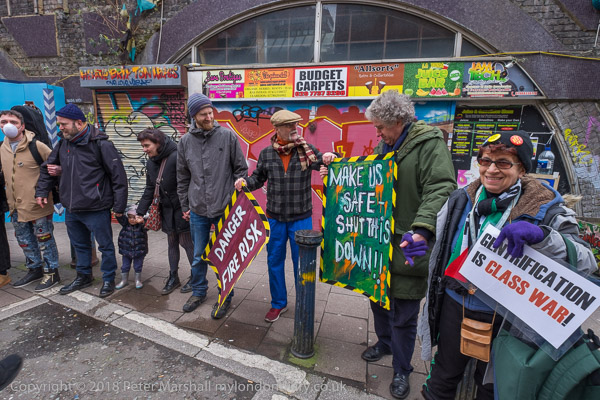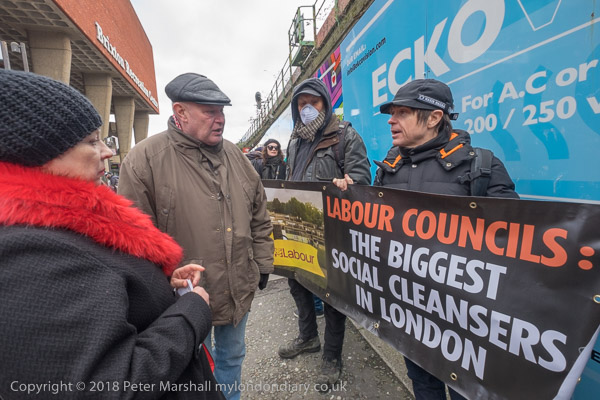Fallujah, SOCPA & the Polish Pope: The day after the Fools Paradise Parade against the Serious Organised Crime and Police Act exclusion zone in yesterday’s post I was back in Parliament Square for another protest in defiance of that restriction on our freedom to protest. Milan Rai and Maya Evans from the Justice Not Vengeance anti-war group had organised an event on Sunday 2nd April 2006 to mark the second anniversary of the major US assault on Fallujah which had begun on 4th April 2004.
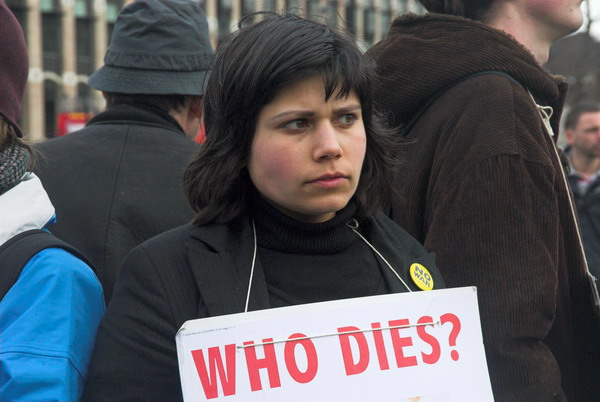
The US having used overwhelming military force was eventually able to claim victory over the few hundred Iraqi militants, but it was a propaganda disaster for them in terms of opinion both in Iraq and around the world, both because they killed roughly three times as many civilians – mainly women and children – as militants, and because the Iraqi militants they were fighting and the civilians were largely opposed to Saddam Hussein and his party.

Here with the usual proper capitalisation and minor corrections is my piece from My London Diary written in 2006, along with another short post on Polish Catholics in London marking the first anniversary of the death of the much-loved Polish Pope John Paul II.
Naming the Dead: 2 Years After Fallujah
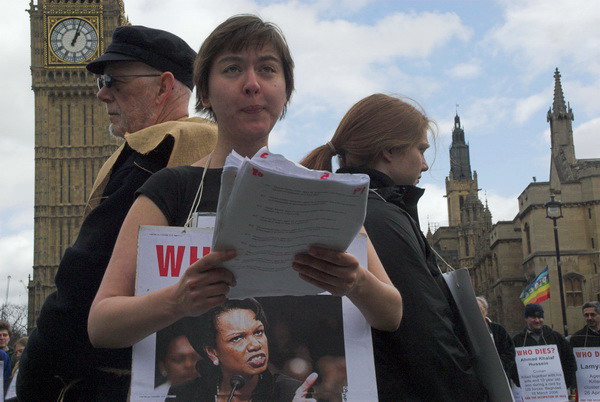
Sunday’s demonstration on the second anniversary of the US attack on Fallujah on April 4, 2004 was a larger and more somber occasion.

It was also organised as an “unauthorised” demonstration in the Westminster Exclusion Zone, and illegal under SOCPA; the organisers and those taking part risked fines of up to £1000.

At least 572 people, mainly civilians, were killed in this first of two assaults on Fallujah, including over 300 women. During the four hours of the demonstration their names were read out. People came to the centre of the circle three at a time and each read a page of the names. As no megaphones are allowed to be used in the restricted area they had to shout to make themselves heard.

Placards aren’t allowed either, so people had posters with names and pictures of the dead and hung these around their necks. There were also some giant puppets representing Iraqi people. As well as the reading of the names, there was also a short play, and some readings of testimonies from people who were there.

The proceedings carried on through some heavy downpours, interspersed by bright sun. When I made a count, there were about 300 present, although some came and left throughout the period.
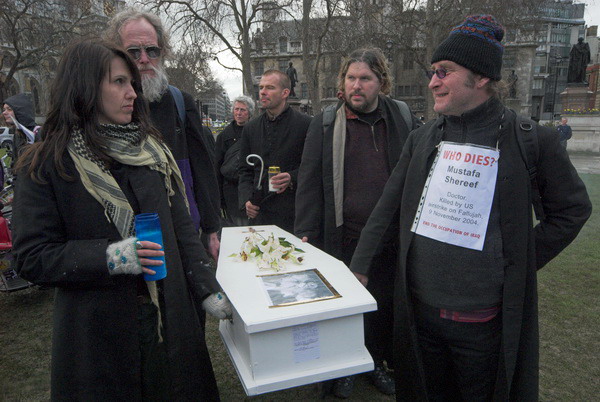
There were only a few police around, largely staying on the perimeter of the area, with a small group a little closer taking notes and a police photographer with a long lens taking pictures. Otherwise they seemed to be taking little notice, although I’ve since seen a report that the man dressed as Charlie Chaplin [Charlie X] and carrying a placard reading “not aloud” (see pictures of him in the Fools Paradise Parade post), had his details taken and was cautioned and told he may be prosecuted. It is also possible that the police may use evidence gathered during the afternoon to issue summonses later.

There were quite a few media photographers present, and at least one TV crew paid a visit, so the event may get rather more publicity than most other demonstrations.
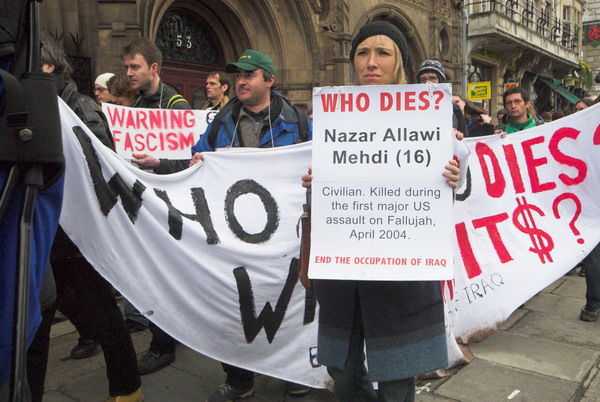
At four o’clock, the police noted that demonstrators left the square, but they apparently ignored the unauthorised – and thus illegal – march that took place behind a coffin up Whitehall to opposite Downing Street, where a short ceremony with readings took place. I had to leave before it had finished.
Anniversary of Death of Pope Jean Paul II
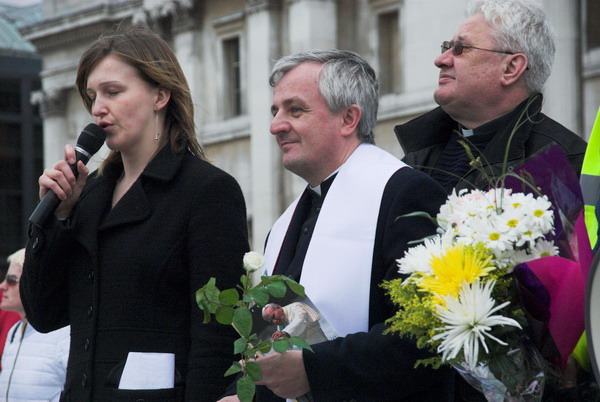
Also taking place during the afternoon was a march by 2000 Polish catholics to mark the first anniversary of the death of the Polish Pope John Paul II. The procession was addressed briefly by a priest from the steps in front of the National Gallery in Trafalgar Square before setting off down Whitehall on its way to Westminster Cathedral.
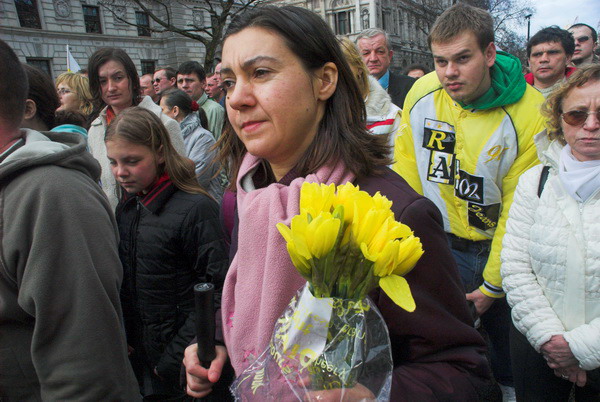
A number of people in the procession carried Polish flags or pictures of the late Pope, and many had flowers which would be left in his honour at Westminster Cathedral.
Driving rain soon made photographs difficult, though it stopped and the rain came out when we were halfway down Whitehall.
Flickr – Facebook – My London Diary – Hull Photos – Lea Valley – Paris
London’s Industrial Heritage – London Photos
All photographs on this page are copyright © Peter Marshall.
Contact me to buy prints or licence to reproduce.
